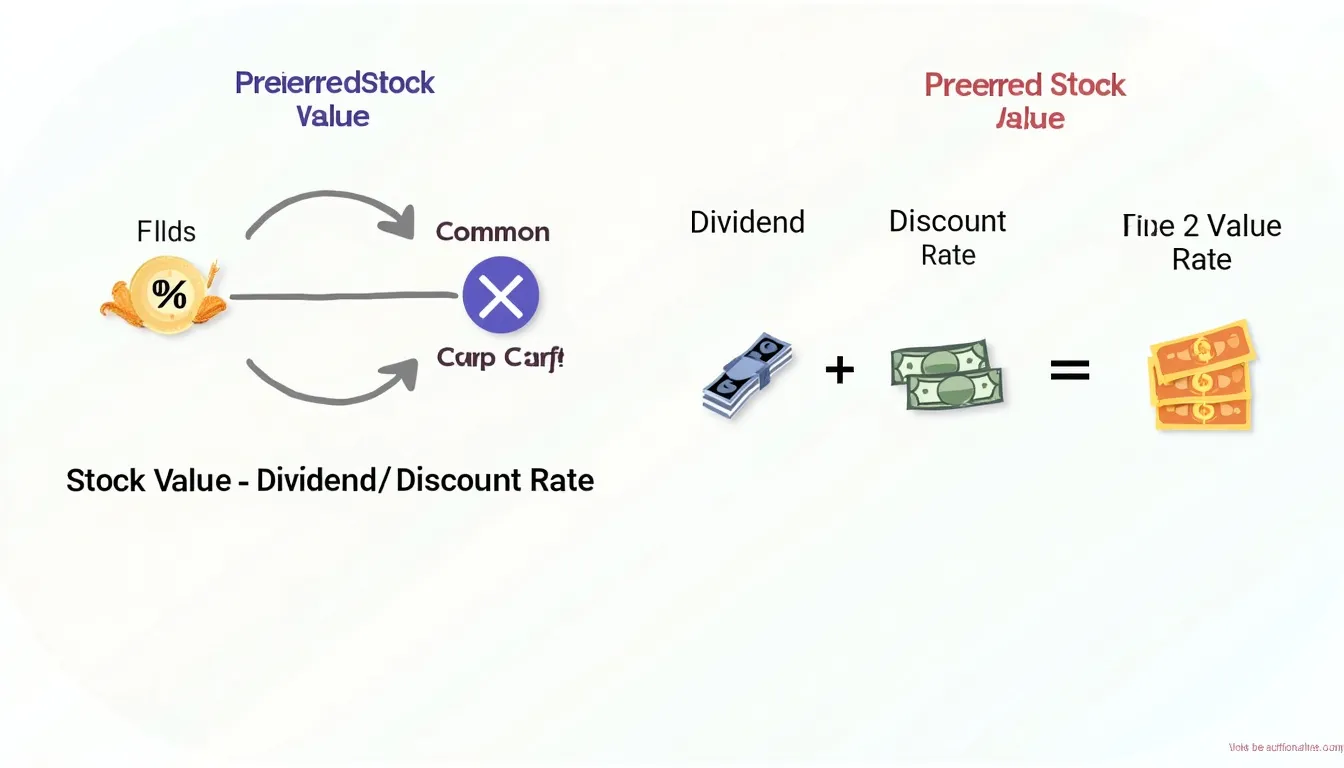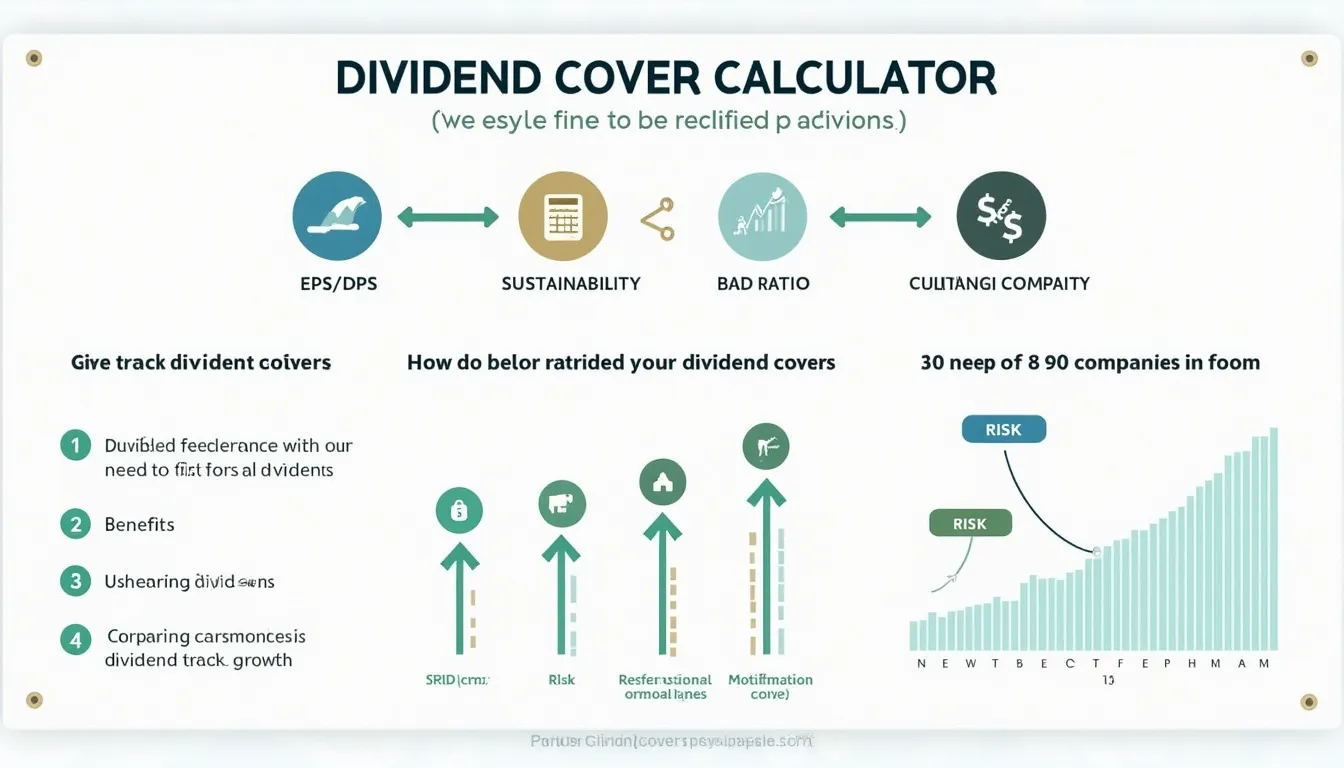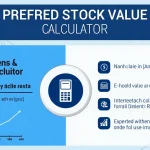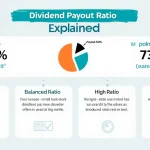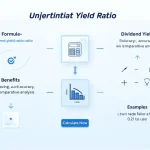Preferred Stock Value Calculator
Is this tool helpful?
How to Use the Preferred Stock Value Calculator Effectively
The Preferred Stock Value Calculator is a powerful tool designed to help investors, financial analysts, and students quickly determine the value of preferred stock. To use this calculator effectively, follow these simple steps:
- Enter the annual dividend amount in USD in the “Dividend (USD)” field.
- Input the discount rate as a percentage in the “Discount Rate (%)” field.
- Click the “Calculate” button to generate the preferred stock value.
- Review the result displayed in the “Preferred Stock Value” section.
For optimal results, ensure that you have accurate information about the preferred stock’s annual dividend and the current market discount rate. This calculator uses the following formula to determine the preferred stock value:
$$\text{Preferred Stock Value} = \frac{\text{Annual Dividend}}{\text{Discount Rate}}$$
By inputting precise data, you’ll obtain a more accurate valuation of the preferred stock, enabling you to make informed investment decisions.
Understanding Preferred Stock Value: Definition, Purpose, and Benefits
Preferred stock is a unique class of equity that combines features of both stocks and bonds. Unlike common stock, preferred stock typically offers a fixed dividend payment and takes precedence over common stock in the event of liquidation. The Preferred Stock Value Calculator helps investors determine the fair value of these securities, which is crucial for making informed investment decisions.
The primary purpose of this calculator is to provide a quick and accurate estimation of preferred stock value based on its dividend payments and the prevailing discount rate. By understanding the value of preferred stock, investors can:
- Assess whether a preferred stock is overvalued or undervalued in the market
- Compare different preferred stock offerings
- Determine the potential return on investment
- Make more informed decisions about portfolio allocation
Using this calculator offers numerous benefits, including time savings, reduced calculation errors, and the ability to quickly analyze multiple scenarios by adjusting input variables.
Key Benefits of Using the Preferred Stock Value Calculator
Incorporating the Preferred Stock Value Calculator into your investment toolkit provides several advantages:
1. Accuracy and Precision
The calculator uses a standardized formula to compute preferred stock values, eliminating human error and ensuring consistent results across multiple calculations.
2. Time Efficiency
Instead of manually performing complex calculations, users can obtain results instantly, allowing for quicker decision-making and analysis of multiple investment opportunities.
3. Scenario Analysis
By easily adjusting input variables, investors can explore various scenarios and understand how changes in dividends or discount rates affect preferred stock values.
4. Educational Tool
For students and novice investors, the calculator serves as an excellent learning resource to understand the relationship between dividends, discount rates, and preferred stock values.
5. Comparative Analysis
Investors can quickly compare multiple preferred stock offerings by inputting different dividend amounts and discount rates, facilitating more informed investment choices.
6. Risk Assessment
By analyzing how changes in discount rates affect preferred stock values, investors can better assess the potential risks associated with interest rate fluctuations.
Addressing User Needs and Solving Specific Problems
The Preferred Stock Value Calculator addresses several key user needs and solves specific problems faced by investors and financial professionals:
1. Valuation Accuracy
One of the primary challenges in preferred stock investing is determining the fair value of these securities. The calculator provides a standardized method for valuation, ensuring consistency and accuracy in the assessment process.
2. Market Comparison
Investors often struggle to compare preferred stocks with different dividend rates and market prices. By using the calculator, they can easily determine the relative value of various preferred stock offerings, enabling more informed decision-making.
3. Portfolio Optimization
For portfolio managers and individual investors, the calculator aids in optimizing asset allocation by providing quick valuations of preferred stocks. This allows for more efficient portfolio rebalancing and risk management.
4. Investment Strategy Development
The calculator helps investors develop and refine their preferred stock investment strategies by allowing them to analyze the impact of different dividend rates and discount rates on stock values.
5. Financial Planning
Financial planners can use the calculator to project potential returns from preferred stock investments, helping clients make informed decisions about their long-term financial goals.
6. Academic Research
Researchers and students in finance and economics can utilize the calculator to study the behavior of preferred stock values under various market conditions, contributing to academic understanding of these securities.
Practical Applications and Use Cases
To illustrate the practical applications of the Preferred Stock Value Calculator, consider the following examples:
Example 1: Comparing Two Preferred Stock Offerings
An investor is considering two preferred stock options:
- Stock A: $2 annual dividend, 5% discount rate
- Stock B: $1.75 annual dividend, 4% discount rate
Using the calculator:
- Stock A value: $2 / 0.05 = $40
- Stock B value: $1.75 / 0.04 = $43.75
Despite the lower dividend, Stock B has a higher calculated value due to the lower discount rate, potentially making it a more attractive investment.
Example 2: Assessing the Impact of Interest Rate Changes
An investor owns a preferred stock with a $3 annual dividend. The current discount rate is 6%, resulting in a stock value of $50 ($3 / 0.06). If interest rates rise and the discount rate increases to 7%, the new stock value would be approximately $42.86 ($3 / 0.07), illustrating the inverse relationship between discount rates and preferred stock values.
Example 3: Determining Required Dividend for Target Value
A company wants to issue preferred stock at $100 per share with a 5% discount rate. To determine the required annual dividend, we can rearrange the formula:
$$\text{Annual Dividend} = \text{Preferred Stock Value} \times \text{Discount Rate}$$
Plugging in the values: $100 × 0.05 = $5
The company would need to offer a $5 annual dividend to achieve the target $100 share price at a 5% discount rate.
Frequently Asked Questions (FAQ)
1. What is preferred stock?
Preferred stock is a class of ownership in a corporation that has a higher claim on assets and earnings than common stock. Preferred stockholders typically receive fixed, regular dividend payments before common stockholders.
2. How is the discount rate determined?
The discount rate for preferred stock is typically influenced by several factors, including current market interest rates, the company’s credit rating, and the specific features of the preferred stock. It represents the rate of return investors require to invest in the preferred stock.
3. Can this calculator be used for all types of preferred stock?
This calculator is designed for simple, straight preferred stock without additional features. It may not accurately value convertible, retractable, or callable preferred stocks, which have more complex valuation methods.
4. Why might the calculated value differ from the market price?
Market prices can deviate from calculated values due to various factors, including market sentiment, supply and demand dynamics, and company-specific news or events.
5. How often should I recalculate preferred stock values?
It’s advisable to recalculate preferred stock values periodically, especially when there are significant changes in market interest rates or the issuing company’s financial health.
6. Can this calculator be used for perpetual preferred stock?
Yes, this calculator is particularly suited for valuing perpetual preferred stock, which has no maturity date and is assumed to pay dividends indefinitely.
7. How does inflation affect preferred stock values?
Inflation can indirectly affect preferred stock values by influencing interest rates. As inflation rises, interest rates typically increase, which can lead to higher discount rates and lower preferred stock values.
8. Is the calculated value guaranteed to be accurate?
While this calculator uses a standard formula for preferred stock valuation, we cannot guarantee that the results are always correct, complete, or reliable. Our content and tools might have mistakes, biases, or inconsistencies. It’s always recommended to consult with a financial advisor for personalized investment advice.
Conclusion: Empowering Your Investment Decisions
The Preferred Stock Value Calculator is an invaluable tool for investors, financial professionals, and students seeking to understand and analyze preferred stock investments. By providing quick and accurate valuations, this calculator empowers users to make more informed decisions, compare investment opportunities, and optimize their portfolios.
Key benefits of using this calculator include:
- Time-saving calculations
- Improved accuracy in preferred stock valuation
- Enhanced ability to compare different preferred stock offerings
- Better understanding of the relationship between dividends, discount rates, and stock values
- Facilitation of scenario analysis for risk assessment
As you navigate the complex world of preferred stock investments, let this calculator be your trusted companion in financial analysis and decision-making. Remember to use it in conjunction with other research tools and professional advice to develop a comprehensive investment strategy.
Take the first step towards more informed preferred stock investing by using our Preferred Stock Value Calculator today. Whether you’re a seasoned investor or just starting your financial journey, this tool will help you unlock the potential of preferred stock investments and contribute to your overall financial success.
Important Disclaimer
The calculations, results, and content provided by our tools are not guaranteed to be accurate, complete, or reliable. Users are responsible for verifying and interpreting the results. Our content and tools may contain errors, biases, or inconsistencies. We reserve the right to save inputs and outputs from our tools for the purposes of error debugging, bias identification, and performance improvement. External companies providing AI models used in our tools may also save and process data in accordance with their own policies. By using our tools, you consent to this data collection and processing. We reserve the right to limit the usage of our tools based on current usability factors. By using our tools, you acknowledge that you have read, understood, and agreed to this disclaimer. You accept the inherent risks and limitations associated with the use of our tools and services.
